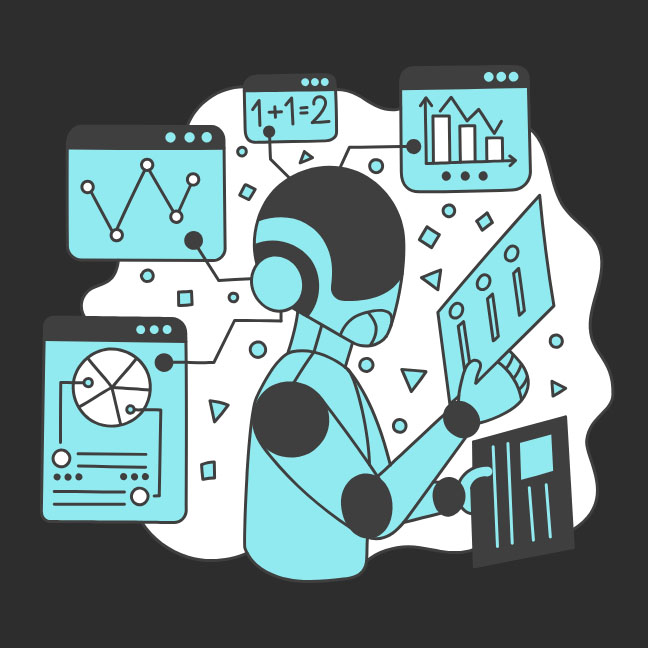Artificial Intelligence, zBlog
How Enterprise Process Automation Drives Digital Transformation and ROI
trantorindia | Updated: July 31, 2025
In the hyper-competitive B2B landscape of 2026, Enterprise Process Automation (EPA) stands as the backbone of true digital transformation. It is no longer a “nice-to-have” but a strategic necessity for large enterprises seeking sustainable growth, agility, and measurable ROI. At Trantor Inc., we help organizations turn process automation into a growth engine—empowering teams, optimizing workflows, and future-proofing business models.
What Is Enterprise Process Automation?
Enterprise Process Automation is the strategic use of advanced software, AI, and integration tools to automate complex, end-to-end business processes across multiple departments. Unlike basic workflow automation, EPA unifies data and systems, orchestrates tasks across teams, and delivers actionable intelligence in real-time.
Secondary Keywords: business process automation, workflow automation, hyperautomation, B2B digital transformation, process mining, intelligent automation, RPA, low-code automation, AI-driven automation.
Why EPA Is Vital for Modern Enterprises
- Scalability: EPA handles millions of transactions seamlessly, scaling as your business grows without manual intervention.
- Resilience: Automated processes are less prone to human error, enabling business continuity even during disruptions.
- Customer Centricity: Faster, consistent, and reliable processes drive superior customer experiences.
- Cost Savings: Dramatic reduction in operational costs—enterprises reported up to 240% ROI within the first year, recouping investments in as little as 6–9 months.
Latest Trends Shaping EPA in 2026
- Hyperautomation: Blending RPA, AI, process mining, and ML, hyperautomation automates every conceivable business process—not just repetitive tasks. Organizations adopting this approach see radical improvements in efficiency, agility, and decision-making.
- AI as the Orchestrator: EPA is now powered by AI engines that continuously analyze, optimize, and learn from business data, dynamically adjusting workflows for evolving demands.
- Low-Code and No-Code Platforms: Empowering business users—not just developers—to build, deploy, and refine automations rapidly, slashing development bottlenecks and boosting innovation.
- Process Mining & Analytics: Advanced process mining tools provide deep visibility into workflow bottlenecks, inefficiencies, and compliance gaps, equipping leaders with data-driven insights for continuous optimization.
- Citizen Development: “Citizen developers” leverage user-friendly interfaces to create automations, accelerating digital transformation from within the business.
- End-to-End Integration: EPA platforms now seamlessly connect legacy systems, cloud apps, and IoT devices, creating unified data environments for holistic process orchestration.
- Human–Machine Collaboration: Advanced cobots and AI assistants handle routine and complex tasks in tandem with human experts, boosting productivity and employee satisfaction.
Key Technologies Driving EPA in 2026
Top Enterprise Process Automation Tools (2025–2026)
- UiPath: Full-stack platform with GenAI-powered Autopilot, process & task mining, and deep integration with Microsoft CoPilot and leading cloud AI services.
- Microsoft Power Automate: Enterprise-grade automation with AI Builder and seamless Microsoft 365/Teams integration.
- Automation Anywhere: Cloud-native EPA, strong AI integrations, bot store marketplace, and real-time performance analytics.
- Dynatrace: AI-driven answer-centric automation focusing on observability, security, and real-time incident remediation.
- ProcessMaker: Robust low-code/no-code suite with cross-platform workflow automation, real-time stakeholder notifications, and BPMN compliance.
- Lark: Integrated collaboration + automation platform, AI-powered bots, flexible approval workflows, and ready-to-use templates for B2B teams.
How EPA Fuels Digital Transformation
Enterprise Process Automation is inseparable from digital transformation. Here’s why adopting EPA is central to B2B success:
- Unified Data Flow: Breaks down silos, enabling seamless communication and data sharing across departments and business units.
- Agility & Speed: Automated processes are instantly adaptable during market shifts or regulatory changes.
- Informed Decision-Making: Real-time analytics and AI-driven recommendations deliver insights at the point of need, enabling leaders to act decisively.
- Workforce Empowerment: Employees are freed from repetitive manual tasks and empowered to focus on innovation, strategy, and customer service.
Measuring EPA Success: The ROI Equation
Successful Enterprise Process Automation investments drive clear, quantifiable outcomes. The six core metrics to track are:
- Time Savings (e.g., ticket resolution time cut from hours to minutes)
- Cost Reductions (lower labor costs, fewer support tickets, optimized resource allocation)
- Error Rate Decrease (minimized rework and losses)
- Employee Productivity (more output per full-time equivalent)
- Customer Satisfaction (improved NPS, faster service delivery)
- Compliance & Audit Readiness (automated, traceable reporting)
The typical ROI formula for EPA:
ROI = (Total Value Realized − Total Investment) / Total Investment × 100
Example: If you invest $100,000 in an EPA initiative and realize $250,000 in business value within a year, your ROI is 150%.
EPA in Action: B2B Case Studies
- Manufacturing: Automated Order-to-Cash cycle reduced Days Sales Outstanding by 24%, eliminated 90% of manual AR tasks, and enabled real-time cash flow visibility across the enterprise.
- SaaS Providers: Onboarding automation cut client onboarding time by 60%, doubled upsell conversion rates, and boosted customer retention by 35%.
- Wholesale Distribution: Automated credit scoring and risk alerts reduced credit approval from 3 days to 2 hours, virtually eliminating bad-debt write-offs.
Overcoming Automation Challenges
EPA projects can falter without planning. As a best practice, B2B organizations should:
- Start with clear objectives and measurable KPIs.
- Engage business and IT stakeholders collaboratively.
- Invest in change management and workforce upskilling.
- Ensure robust data governance for trustworthy analytics.
- Adopt agile, scalable platforms ready for tomorrow’s needs.
The Unique Trantor Perspective
What sets our approach apart?
- Human-Centric Automation: We design EPA with end users in mind, ensuring intuitive experiences and swift user adoption.
- CoE Delivery Model: Our Captive Center of Excellence engagement model scales with your ambitions, providing top-tier engineers, data scientists, and domain experts dedicated to your EPA journey.
- Proven Results: Our clients see measurable outcomes—from increased retention in SaaS, to award-winning compliance innovations, to global financial optimizations.
- Innovation and Inclusion: We foster a culture of continuous improvement, diversity, and global expertise.
Looking Ahead: The Future of EPA
Enterprise Process Automation is at a strategic inflection point:
- By 2027, AI-powered automation is expected to account for over 60% of all B2B process optimization projects, up from 35% in 2024.
- Hyperautomation and digital twins will become standard features—creating real-time, data-driven simulations of enterprise operations.
- Citizen developers and automation-first mindsets will be the new norm, driving innovation from every business unit.
Conclusion
At Trantor Inc., we believe Enterprise Process Automation is more than a technology upgrade—it’s the engine of next-generation B2B growth. Organizations that embed automation throughout their DNA will outpace, outthink, and outlast competitors.
- Faster, error-free processes.
- Real-time business intelligence.
- Empowered employees delivering customer delight.
- Rapid, measurable ROI—fueling future innovation.
Let us help you unlock the full potential of Enterprise Process Automation for your B2B enterprise. Together, we deliver more than solutions—we deliver lasting business impact.
Turn your ambitions into reality with Trantor Inc. by your side. Explore how we can accelerate your digital transformation today.
Ready to automate?
Contact us at Trantor Inc.—your trusted partner in digital transformation and enterprise excellence.



